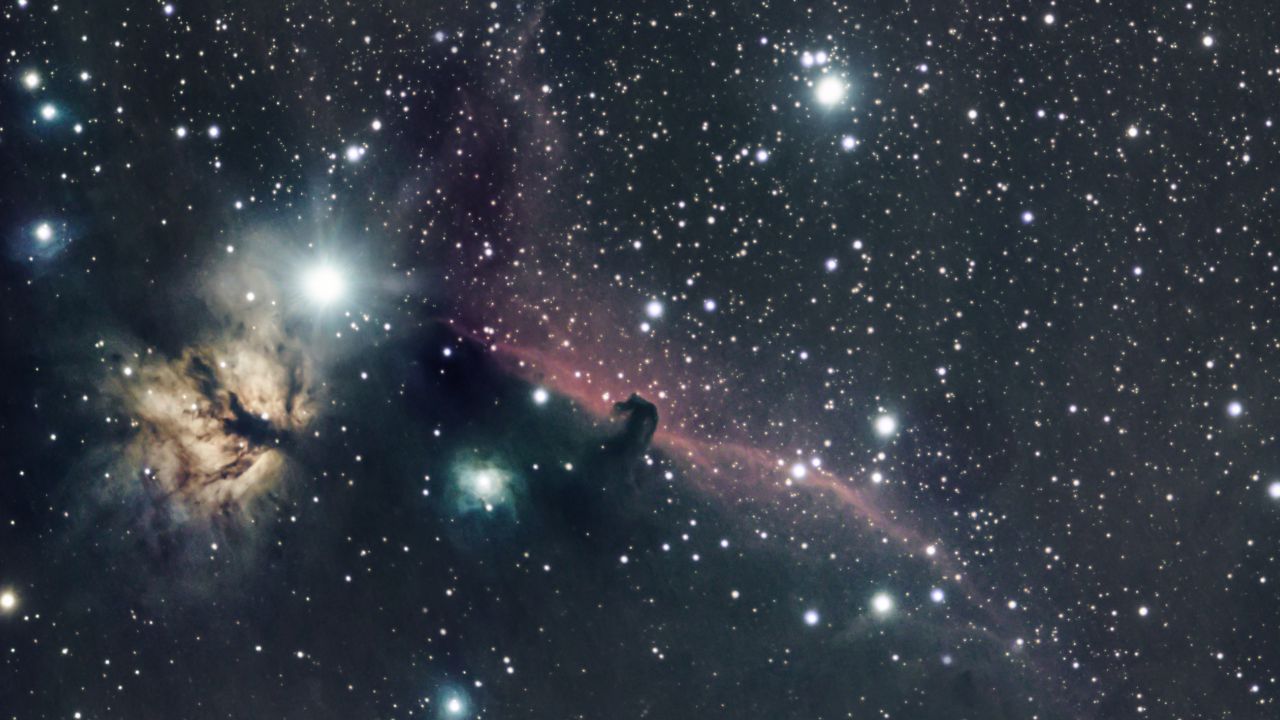- Introduction
- The Basics of Astronomy and Astrophysics
- Celestial Bodies and Phenomena
- Understanding the Universe: Key Theories and Discoveries
- Conclusion
- Keywords
- Key Takeaways
- You Might Still Be Wondering about…
- What are some current challenges in astronomy and astrophysics research, and what breakthroughs can we expect in the future?
- How does studying celestial objects contribute to our understanding of the Earth and the origins of life?
- How do astronomers and astrophysicists gather data and make observations about objects that are light-years away?
- What are some ethical considerations in space exploration and astronomical research?
- How does the study of cosmology contribute to our understanding of the universe’s past, present, and future?
- Are there potential practical applications of astronomical and astrophysical research beyond fundamental knowledge?
- How does the study of gravitational waves contribute to our understanding of the universe?
- How does the discovery of exoplanets impact our understanding of the potential for extraterrestrial life?
- How does the study of astrophysics contribute to our understanding of the fundamental laws of physics?
- How can astronomy and astrophysics education and outreach inspire the next generation of scientists and foster public interest in the universe?
- Common Misconceptions
- Astronomy and astrophysics are the same fields.
- Stars only exist in our galaxy.
- The Big Bang was an explosion that occurred within space.
- Black holes are cosmic vacuum cleaners that swallow everything nearby.
- Dark matter is the same as antimatter.
- General Relativity explains everything about the behavior of the universe.
- All exoplanets discovered so far are Earth-like and potentially habitable.
- The expansion of the universe means galaxies are moving away from a central point.
- The existence of dark matter and dark energy is purely speculative.
- Astronomers study astrology and make predictions based on star positions.
Introduction
Humans have always been fascinated by the universe. The sparkling dots of light in the night sky that we recognize as stars and planets have been the subjects of wonder, myth, and scientific exploration for millennia. Astronomy, the study of celestial bodies, and astrophysics, the application of physics to understand the universe’s phenomena, are the tools we use to explore and understand the cosmic theater we’re a part of. This article aims to dive into the wonders of the universe, through the lenses of astronomy and astrophysics.
The Basics of Astronomy and Astrophysics
Astronomy, one of the oldest sciences, involves the study of celestial bodies such as planets, stars, galaxies, and the phenomena that occur outside the Earth’s atmosphere. The goal is to understand the positions, motions, compositions, histories, and general workings of these celestial bodies.
Astrophysics, a branch of astronomy, uses the principles of physics and chemistry to determine the nature of celestial bodies and the physical processes governing their behavior. Astrophysicists study phenomena like the lifecycle of stars, the behavior of galaxies, and the universe’s expansion.
Celestial Bodies and Phenomena
Stars
Stars, like our Sun, are enormous spheres of hot gas, primarily composed of hydrogen and helium. They generate energy through a process called nuclear fusion, where hydrogen atoms combine to form helium, releasing light and heat in the process. This process is responsible for the light and warmth that our sun provides.
Stars have a lifecycle. They begin as a cloud of gas and dust, condense and heat to form a protostar, then mature into a main-sequence star like our sun. Eventually, the star exhausts its hydrogen supply and expands into a red giant. What happens next depends on the star’s mass – it may shed its outer layers to form a white dwarf surrounded by a planetary nebula, or explode in a supernova, leaving behind a dense neutron star or a black hole.
Planets
Planets are celestial bodies that orbit stars. In our solar system, we have eight recognized planets, each with unique characteristics. For instance, Venus is known for its thick, toxic atmosphere and runaway greenhouse effect, while Mars is recognized for its red color due to iron oxide (rust) on its surface.
Galaxies
A galaxy is a vast collection of stars, gas, dust, and dark matter, bound together by gravity. Our galaxy, the Milky Way, is a barred spiral galaxy with several arms of stars spiraling around a central bulge. Galaxies come in various shapes and sizes, from dwarf galaxies with just a few billion stars to giants with trillions.
Black Holes
Black holes, a fascinating subject of astrophysics, are regions of spacetime where gravity is so strong that nothing, not even light, can escape. They form from the remnants of massive stars after a supernova explosion. Black holes are invisible but can be detected by their effects on nearby objects and their gravitational waves.
Understanding the Universe: Key Theories and Discoveries
The Big Bang Theory
The Big Bang Theory is the prevailing cosmological model for the observable universe. It posits that the universe began as a hot, dense point nearly 13.8 billion years ago and has been expanding ever since. Evidence for this theory includes the redshift of distant galaxies (indicating the universe is expanding) and the Cosmic Microwave Background (relic radiation from the early universe).
The Theory of Relativity
Einstein’s Theory of Relativity revolutionized our understanding of space, time, and gravity. The theory comprises two parts: Special Relativity, which describes how the laws of physics work when you’re moving at constant speed in a straight line, and General Relativity, a theory of gravity describing how massive objects warp spacetime around them, causing other objects to move along curved paths.
Dark Matter and Dark Energy
Dark matter is a hypothetical form of matter that doesn’t emit or interact with electromagnetic radiation, making it invisible. Its existence is inferred from its gravitational effects on visible matter, such as stars and galaxies. Dark energy is a mysterious force driving the accelerated expansion of the universe. Together, dark matter and dark energy are thought to make up about 95% of the universe, with ‘normal’ matter and energy constituting just 5%.
Conclusion
The universe is a vast, fascinating place full of wonders that we’re only beginning to understand. The fields of astronomy and astrophysics allow us to look up at the night sky and see more than just points of light – they let us see a cosmic theater full of stars being born and dying, galaxies spinning, and the universe itself expanding. There’s still so much to discover, and every new discovery brings new questions. As we continue to explore, we can expect our understanding of the universe to keep evolving, revealing ever more of its wonders. The universe is out there, waiting for us to understand it – and with astronomy and astrophysics, we’re doing just that.
Keywords
- Astronomy: The scientific study of celestial objects, such as stars, planets, galaxies, and other phenomena beyond Earth’s atmosphere.
- Astrophysics: The branch of astronomy that applies the principles of physics and chemistry to understand the nature and behavior of celestial bodies.
- Celestial bodies: Objects in space, including stars, planets, moons, asteroids, comets, and other natural objects.
- Stars: Enormous spheres of hot gas that generate energy through nuclear fusion and emit light and heat.
- Planets: Celestial bodies that orbit stars, characterized by their unique properties and composition.
- Galaxies: Vast collections of stars, gas, dust, and dark matter bound together by gravity.
- Black holes: Regions of spacetime with intense gravitational forces, where nothing, including light, can escape.
- The Big Bang Theory: The prevailing scientific explanation for the origin and evolution of the universe, suggesting it began with a hot, dense state nearly 13.8 billion years ago and has been expanding ever since.
- Theory of Relativity: Albert Einstein’s theory that revolutionized our understanding of space, time, and gravity, including Special Relativity and General Relativity.
- Dark matter and dark energy: Hypothetical forms of matter and energy that are believed to constitute a significant portion of the universe, despite being invisible and not interacting with electromagnetic radiation.
Key Takeaways
- Astronomy studies celestial objects and phenomena outside Earth, aiming to understand their positions, motions, compositions, and histories.
- Astrophysics applies physics and chemistry to explore the nature and physical processes of celestial bodies.
- Stars undergo a lifecycle, starting as clouds of gas and dust, maturing into main-sequence stars, and potentially transforming into red giants, white dwarfs, neutron stars, or black holes.
- Planets are celestial bodies that orbit stars and have diverse characteristics and compositions.
- Galaxies are vast collections of stars, gas, dust, and dark matter, with the Milky Way being our own galaxy.
- Black holes are regions where gravity is extremely strong, resulting from the collapse of massive stars.
- The Big Bang Theory explains the universe’s origin and expansion, supported by evidence like redshift and the Cosmic Microwave Background.
- The Theory of Relativity describes the relationships between space, time, and gravity, providing insights into the behavior of objects in motion and massive objects.
- Dark matter is inferred from its gravitational effects and remains invisible, while dark energy drives the accelerated expansion of the universe.
- Astronomy and astrophysics continue to unveil the mysteries of the universe, expanding our knowledge and raising new questions.
You Might Still Be Wondering about…
What are some current challenges in astronomy and astrophysics research, and what breakthroughs can we expect in the future?
Current challenges include understanding dark matter and dark energy, unraveling the mysteries of black holes, exploring exoplanets, and discovering the nature of cosmic phenomena such as gamma-ray bursts. Breakthroughs may involve improved observational techniques, advanced theoretical models, and collaborations across disciplines.
How does studying celestial objects contribute to our understanding of the Earth and the origins of life?
Studying celestial objects provides insights into the physical laws and processes that govern the universe. By understanding the universe’s history and conditions for planetary formation, we can gain a better understanding of Earth’s place in the cosmos and the possibility of life on other planets.
How do astronomers and astrophysicists gather data and make observations about objects that are light-years away?
Astronomers use various tools and techniques, such as telescopes (ground-based and space-based), spectroscopy, radio telescopes, and gravitational wave detectors. These instruments allow them to detect and analyze electromagnetic radiation, gravitational waves, and other signals from distant celestial objects.
What are some ethical considerations in space exploration and astronomical research?
Ethical considerations may include issues related to the protection of celestial environments, the impact of space debris on future exploration, and the potential consequences of discovering extraterrestrial life. Balancing scientific progress, responsible exploration, and ethical considerations is crucial.
How does the study of cosmology contribute to our understanding of the universe’s past, present, and future?
Cosmology, the study of the universe as a whole, provides insights into its origin, evolution, and future. By examining the cosmic microwave background radiation, the distribution of galaxies, and the rate of expansion, cosmologists can develop theories and models to understand the universe’s structure and fate.
Are there potential practical applications of astronomical and astrophysical research beyond fundamental knowledge?
Yes, there are practical applications such as satellite-based communication and navigation systems, Earth observation for climate monitoring, and the development of advanced technologies inspired by space exploration, including imaging technologies and materials science.
How does the study of gravitational waves contribute to our understanding of the universe?
Gravitational waves provide a unique way to study cosmic phenomena, such as merging black holes and neutron stars. They offer insights into the behavior of massive objects, the nature of spacetime, and the dynamics of the universe, complementing observations in other wavelengths.
How does the discovery of exoplanets impact our understanding of the potential for extraterrestrial life?
The discovery of exoplanets, planets orbiting other stars, expands the possibilities for finding habitable environments and extraterrestrial life. By studying exoplanet atmospheres and conditions, scientists can assess the potential for life beyond our solar system.
How does the study of astrophysics contribute to our understanding of the fundamental laws of physics?
Astrophysics provides extreme environments and celestial phenomena that can test and refine our understanding of fundamental physics. By studying objects like black holes, pulsars, and the behavior of matter under extreme conditions, scientists can push the boundaries of our knowledge and theories.
How can astronomy and astrophysics education and outreach inspire the next generation of scientists and foster public interest in the universe?
Astronomy and astrophysics education and outreach programs can engage the public with the wonders of the universe, inspiring curiosity and fostering scientific literacy. Hands-on activities, planetarium shows, citizen science projects, and accessible resources can encourage young minds and cultivate a lifelong interest in scientific exploration.
Common Misconceptions
Astronomy and astrophysics are the same fields.
Reality: Astronomy focuses on the observation and study of celestial objects, while astrophysics applies physics and chemistry to understand the physical processes and properties of celestial bodies.
Stars only exist in our galaxy.
Reality: Stars exist in galaxies throughout the universe. Our galaxy, the Milky Way, is just one among billions of galaxies, each containing countless stars.
The Big Bang was an explosion that occurred within space.
Reality: The Big Bang Theory describes the expansion of space itself from an extremely dense and hot state, rather than an explosion within pre-existing space.
Black holes are cosmic vacuum cleaners that swallow everything nearby.
Reality: While black holes have strong gravitational forces, they only capture objects that come within their event horizon. Objects far enough away can still orbit or be influenced by a black hole without being pulled in.
Dark matter is the same as antimatter.
Reality: Dark matter and antimatter are distinct concepts. Dark matter refers to hypothetical matter that does not interact with electromagnetic radiation, while antimatter consists of particles with opposite charges to normal matter.
General Relativity explains everything about the behavior of the universe.
Reality: While General Relativity describes gravity’s effects on spacetime, it does not encompass other fundamental forces and particle interactions, which are covered by quantum mechanics.
All exoplanets discovered so far are Earth-like and potentially habitable.
Reality: Exoplanets come in a wide range of sizes, compositions, and conditions. While some may resemble Earth, many are inhospitable due to extreme temperatures, lack of atmospheres, or other factors.
The expansion of the universe means galaxies are moving away from a central point.
Reality: The expansion of the universe is a property of space itself, and galaxies are moving away from each other as space expands, without a central point of origin.
The existence of dark matter and dark energy is purely speculative.
Reality: While dark matter and dark energy have not been directly detected, their existence is inferred from observational evidence, such as the gravitational effects on visible matter and the accelerated expansion of the universe.
Astronomers study astrology and make predictions based on star positions.
Reality: Astronomy is a scientific discipline that focuses on studying celestial objects and phenomena, while astrology is a pseudoscience that claims to make predictions based on the positions of celestial bodies. Astronomers do not engage in astrological practices or predictions.












0 Comments
Trackbacks/Pingbacks